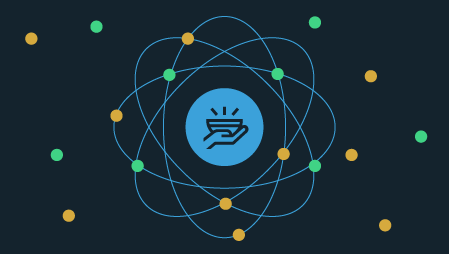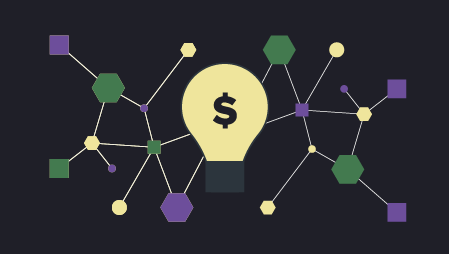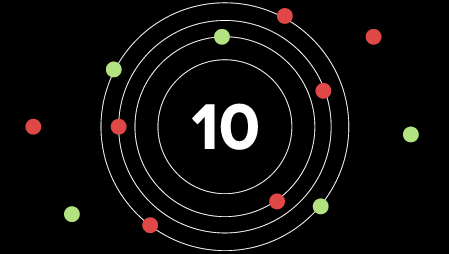Ready to learn Internet of Things? Browse courses like Internet of Things (IoT) Training developed by industry thought leaders and Experfy in Harvard Innovation Lab.
Each year, Earth Day provides an opportunity for people around the world to consider how they can take action to protect our environment. For decades, it has encouraged people to undertake individual actions and advocate for policies – such as the 2015 UN Paris Agreement and the United States’ Clean Air Act and Clean Water Act – that promote a cleaner, more sustainable economy. However, while there have been many environmental protection achievements since the first Earth Day in 1970, the world still faces major environmental challenges – the greatest of which is likely climate change.
Many companies have made the challenge of climate change mitigation a priority and integrated it into their corporate social responsibility efforts, as you can find in our latest CSR Report. This does not change the fact that, as businesses increasingly focus on using AI, cloud, IoT and other digital technologies to succeed in today’s economy, we still mostly use fossil fuels to generate the energy that powers these digital technologies. If we don’t transition away from these fossil fuels sooner rather than later, climate change-related extreme weather events, coastal flooding and droughts might not leave enterprises much of an economy to succeed in.
However, some of those same digital technologies – in particular the IoT – can help us address the climate change challenge by accelerating the transition to a more sustainable, renewable-energy-powered economy. In particular, the IoT is a key enabling technology for an emerging concept called, “The Internet of Energy.” The basic idea of the Internet of Energy is that it provides a cloud-based system for utilities to monitor, control and optimize the rapidly growing number of solar power systems, battery-based energy storage systems, smart thermostats and thousands of other new Internet-connected devices that generate, store and use electricity. With the Internet of Energy, utilities can manage all these distributed energy resources (DERs) and use them to improve grid reliability, reduce energy costs for their customers and, most importantly, increase their use of renewable energy resources.
Coordinating DERs are key to reducing our need for fossil fuels. For example, solar panels generate clean energy, energy storage systems can store energy when a lot of renewable energy is being generated but demand for energy is low and smart thermostats make energy use more efficient. However, utilities need the Internet of Energy in a world where DERs are proliferating, because, unlike large, centralized fossil-fuel dependent power plants that utilities control themselves, these DERs are often owned and deployed by customers and distributed across the grid in factories, office building and homes. In addition to lacking control over DERs, it is hard for utilities to predict how much energy they will generate, store or use at a given time – passing clouds can lower solar energy generation, an EV charging from the grid might suddenly be taken by its owner for a trip to the store, or a birthday party can unexpectedly increase a home’s energy use. This is a problem since utilities need to keep energy supply and demand on the grid balanced. The sudden dips and jumps in energy supply and demand caused by millions of DERs can make this more difficult and lead to blackouts.
However, with the Internet of Energy, utilities can tap into these DERs to compensate for changes in energy supply and demand – whether caused by the DERs themselves or by other factors. For example, many utilities are rolling out demand response programs where customers are compensated for allowing the utility to turn on their biofuel-powered emergency generator, discharge energy from their home’s battery energy storage system or temporarily lower the rate at which they charge their EV. In this way, utilities consolidate all these DERs into a “virtual power plant” that they can use to address fluctuations in energy supply and demand. This helps eliminate utilities’ need to use or build specialized fossil fuel-powered peaker plants to address sudden changes in energy supply and demand related to both DERs as well as the intermittent energy generated from solar power plants, wind farms and other grid-scale renewable energy projects. Such energy “flexibility” programs, enabled by the Internet of Energy, transform the proliferating number of clean energy DERs from a potential problem into an opportunity to improve the economics of both DERs as well as grid-scale renewable energy projects – delivering value to both utilities and their customers.
The past success of IoT-enabled smart grid technologies highlights the Internet of Energy’s potential. With more efficient use of energy, power plants can decrease their use of fossil fuels; utilities can even avoid constructing new power plants. By using the IoT to manage and control DERs, the Internet of Energy makes the smart grid even smarter, allowing utilities to better monitor and control not just energy consumption, but also customer-owned DERs that generate and store energy.
As we reflect on the state of the environment this Earth Day, we must acknowledge that the world still has a long way to go before it can fully transition to clean energy economy. However, there are reasons for optimism – including the fact that, by combining the latest renewable energy collection and storage technologies, smart energy devices and advanced IoT technologies, the Internet of Energy can accelerate adoption of the clean energy DERs that move us closer to solving one of the great environmental challenges of our time.
Find out more about how fully integrated, device-to-cloud IoT solutions and smart connectivity services can help your firm build new clean energy, water management, air pollution monitoring and other IoT applications for a greener, more sustainable and more connected world.
Originally published in Sierra Wireless



